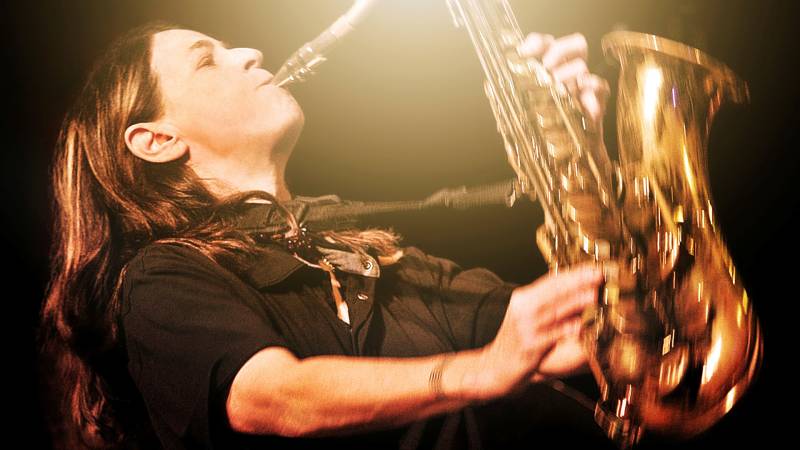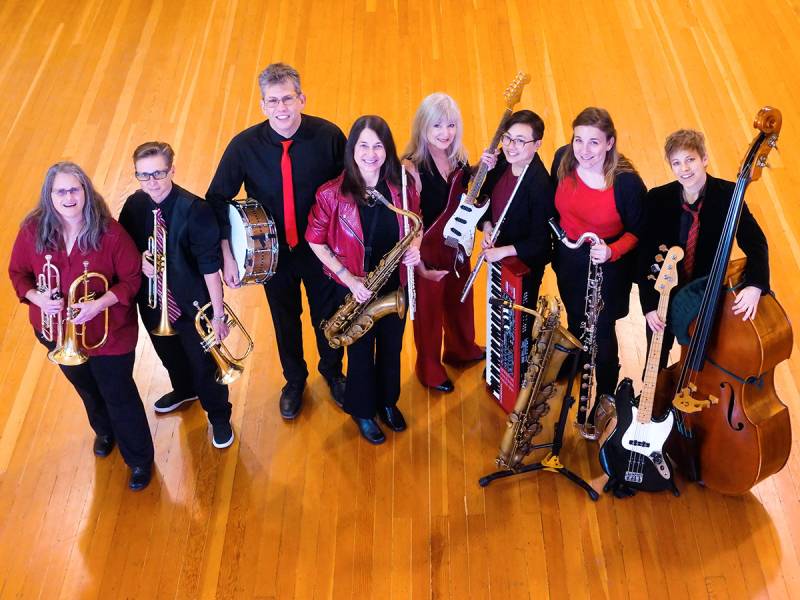Carry your horn with you and you never know where you might end up. For East Bay saxophonist and flutist Jean Fineberg, toting an instrument around has led to some memorable encounters, like the time she ended up at a drug-fueled Electric Ladyland Studios recording session with David Bowie and John Lennon, contributing backup vocals on the 1975 hit “Fame.”
A Bronx native who spent more than a decade on the New York music scene playing R&B, pop, jazz and fusion, Fineberg has been a creative force in the Bay Area since moving west in 1989 with trumpeter Ellen Seeling, her partner in music and life. A versatile and well-traveled performer with more than 50 albums to her credit, including recordings by Patti LaBelle, Bo Diddley and Laura Nyro, Fineberg also played on Sister Sledge’s iconic hit “We Are Family” and anchored the horn section on Chic’s influential albums C’est Chic and Risqué.
In the Bay Area she and Seeling have long co-led the Montclair Women’s Big Band, but in April of this year the saxophonist released her first album under her own name, Jean Fineberg & JAZZphoria. Drawing from the Montclair band’s deep pool of talent, the eight-piece combo makes its Freight & Salvage debut Sunday, Nov. 20. Featuring her original tunes and arrangements, the album reflects Fineberg’s love of improvisation and her conviction that music should be inextricably tied to dance and communal celebration, both of which served her well in her session with Bowie.
Fineberg drifted into Bowie’s orbit because a friend was dating him at the time, and she invited Fineberg to the studio. “I happened to have my flute with me and he asked if I wanted to play,” she recalls. “I ended up taking a solo on ‘Fame.’ And I sang on that too, and I’m not a singer! We all spent the night at his brownstone all coked up listening back to all the tracks. Philip Glass was there too, though I don’t know if he was doing coke. Two weeks later Bowie’s people called and asked for my info. I was in a 20-something daze and didn’t grasp the import. I was credited for vocals, but he cut most of the flute solo, which was totally fine. It’s an amazing song.”




